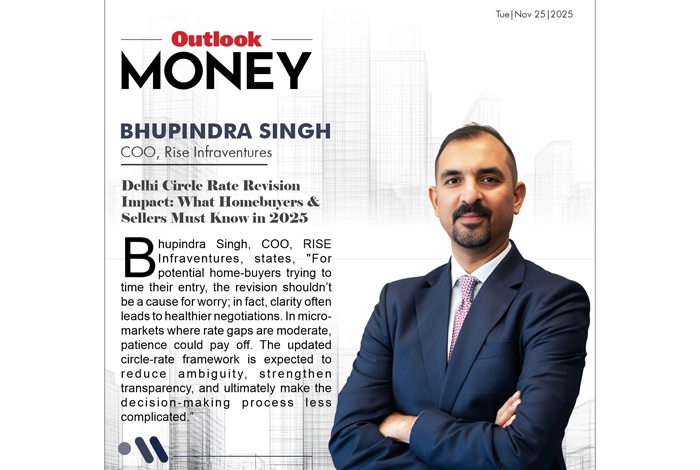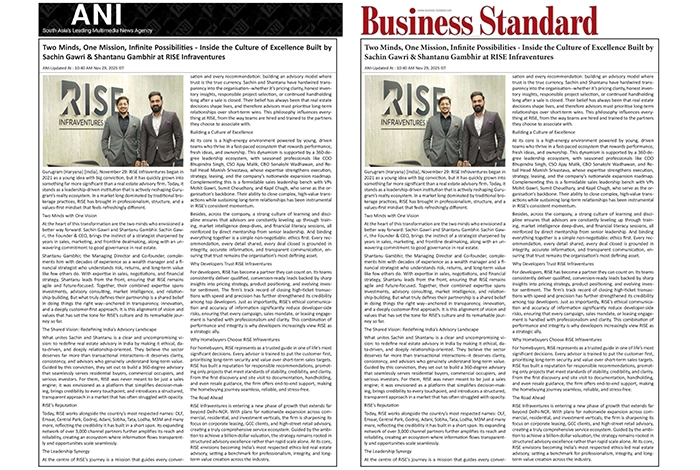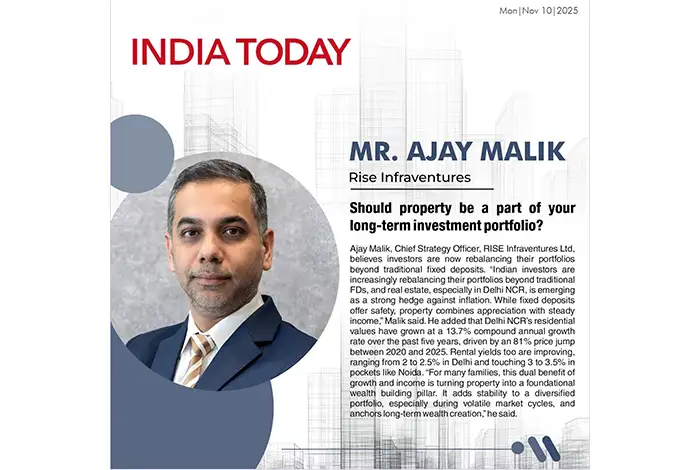Delhi Circle Rate Revision Impact: What Homebuyers & Sellers Must Know in 2025

Delhi's overdue circle rate revision aims to align official property valuations with rising market prices, influencing purchase decisions, negotiation dynamics, and transparency across the city's real estate sector.
Published By Outlook Money
The Delhi property market is set for a significant change as the government plans to revise the circle rate in Delhi. Circle rates are the minimum official property values set by the government for taxation purposes. These rates determine stamp duty and registration fees and help bring transparency to property transactions. The revision is being handled by the revenue department of the National Capital Territory (NCT) of Delhi to align official valuations with actual market prices.
For years, the gap between circle rates and actual transaction values has grown significantly. According to Anarock's report, "Q3 2025 – PAN India Residential Market Viewpoints," average housing prices in Delhi-NCR rose 24% year-on-year in the third quarter of FY26.
In prime areas like Golf Links, Sunder Nagar, Lodi Road, Vasant Vihar, Friends Colony, Kalindi Colony, Maharani Bagh, Nehru Place, Panchshila Park, New Friends Colony, Anand Niketan, and Bhikaji Cama Place, market prices exceed official circle rates by 50-70%. Even if the official circle rate is Rs 7.74 lakh per square metre, actual property prices can reach Rs 11-12 lakh per square metre.
The last circle rate update was in 2014. Since then, property prices have increased dramatically, making the official rates outdated. The revision aims to reduce the gap between market prices and official rates, improve transparency, and increase government revenue from stamp duty and registration fees. The impact will be most substantial in high-demand neighbourhoods where the disparity is highest.
Impact on Homebuyers Delhi
For homebuyers in Delhi, the effect of the circle rate revision depends on the timing of the purchase and the location. Buyers in prime areas may face higher upfront costs once the new rates take effect. This may encourage some to buy sooner, while others may reconsider budgets, explore peripheral regions, or consider redevelopment zones where adjustments may be more balanced.
Bhupindra Singh, COO of RISE Infraventures, says, "For potential homebuyers timing their entry, the revision shouldn't be a concern. Clarity often leads to better negotiations. In micro-markets with moderate rate gaps, patience could pay off. The updated circle rate framework will reduce ambiguity, improve transparency, and simplify decision-making."
Impact on Sellers and Investors
Sellers and investors will also face mixed outcomes. A higher circle rate in Delhi will limit undervaluation and reduce black-money-related transactions in the Delhi real estate market. While this may minimise negotiation flexibility, it improves transparency and credibility. Over time, the new rates are expected to stabilise property prices in Delhi, reduce volatility, and create a fairer, more predictable market for buyers and sellers alike.
Key Proposed Changes in Circle Rate Revision
The Delhi government invited public feedback in October 2025. Based on responses, these key changes are expected:
- New ‘A+ Category’: For ultra-premium areas like Lutyens' Delhi, ensuring higher official valuations.
- Revised Farmhouse Rates: Aligning farmhouse circle rates with actual market values based on location and size.
- Location-Based Pricing Adjustments: More precise rates within existing categories for fairness.
- Increase in Categories: From 8 to potentially 24 categories for better classification. Category A currently stands at Rs 43,000 per sq m, B at Rs 34,100 per sq m, and C at Rs 27,300 per sq m.
- Alignment with Market Prices: Ensuring official valuations reflect actual property prices in Delhi to reduce discrepancies between circle rates and transactions.
Why This Matters for Delhi Real Estate
The circle rate revision is crucial for the Delhi property market. The long-term benefits include:
- Transparency: Reduces ambiguity in property transactions.
- Fair Valuation: Aligns official rates with market realities.
- Revenue Improvement: Boosts government income from stamp duty and registration fees.
- Investment Security: Helps investors and homebuyers make informed decisions.
- Market Stability: Reduces price manipulation and ensures fair negotiations, especially in high-demand areas.
Advice for Homebuyers and Sellers
For homebuyers in Delhi, careful planning is essential. Buyers in prime locations may face higher costs, so timing their purchases is key. For those considering peripheral areas, the revision could make properties more accessible and reasonably priced.
For sellers and investors, transparency and accurate valuations reduce legal and financial risks. Although negotiation flexibility may decrease, fair market prices will support sustainable growth in the Delhi real estate sector.
Conclusion
The circle rate revision in Delhi in 2025 is a necessary update for the city's property market. While it may lead to short-term adjustments in budgets and purchase decisions, the long-term benefits include accurate valuations, fair pricing, greater transparency, and a more stable Delhi property market. Homebuyers, sellers, and investors must understand these changes to make informed decisions in the evolving real estate landscape.
Frequently Asked Questions
1. What is the circle rate in Delhi?
The circle rate in Delhi is the minimum property valuation set by the government for taxation purposes, including stamp duty and registration fees. It is updated periodically to reflect market prices.
2. How will the 2025 circle rate revision impact homebuyers in Delhi?
Homebuyers may face higher upfront costs in prime areas. The revision aims to align official rates with market prices, improve transparency, and reduce ambiguity in negotiations. Peripheral regions may see more balanced pricing adjustments.
3. Will the circle rate revision affect property prices in Delhi?
Yes, the revision may stabilise property prices in high-demand areas, reduce undervaluation, and create a fairer, more predictable Delhi property market over time.
4. What are the key changes proposed in the 2025 circle rate update?
Key changes include introducing a new A+ category for ultra-premium areas, revised farmhouse rates, location-based pricing adjustments, and expanding the number of categories from 8 to potentially 24 for more precise classification.
5. How does the circle rate revision benefit the Delhi real estate sector?
It improves transparency, ensures fair valuation, increases government revenue, reduces black-market transactions, and provides both buyers and sellers with a more reliable, stable property market.




